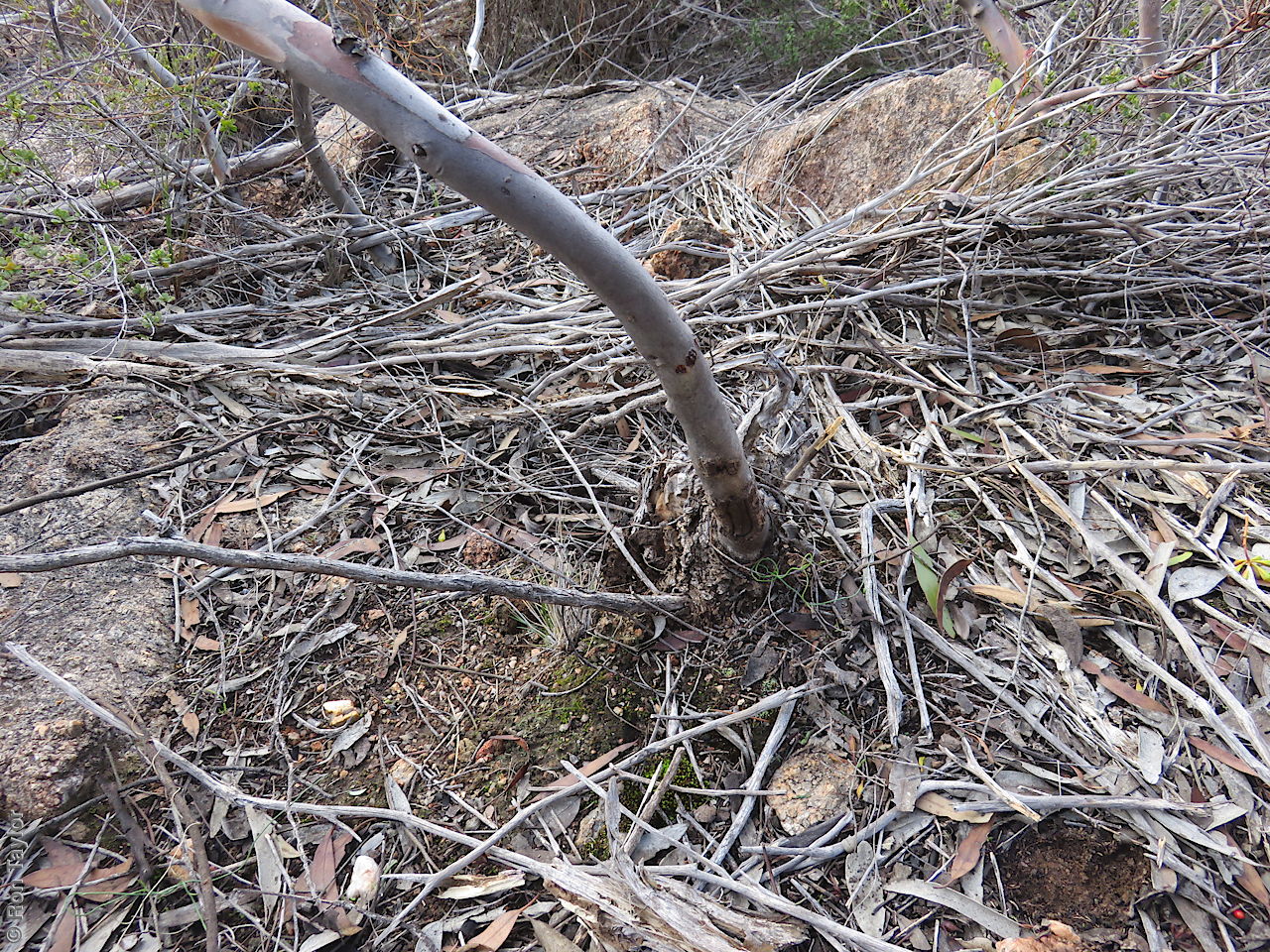
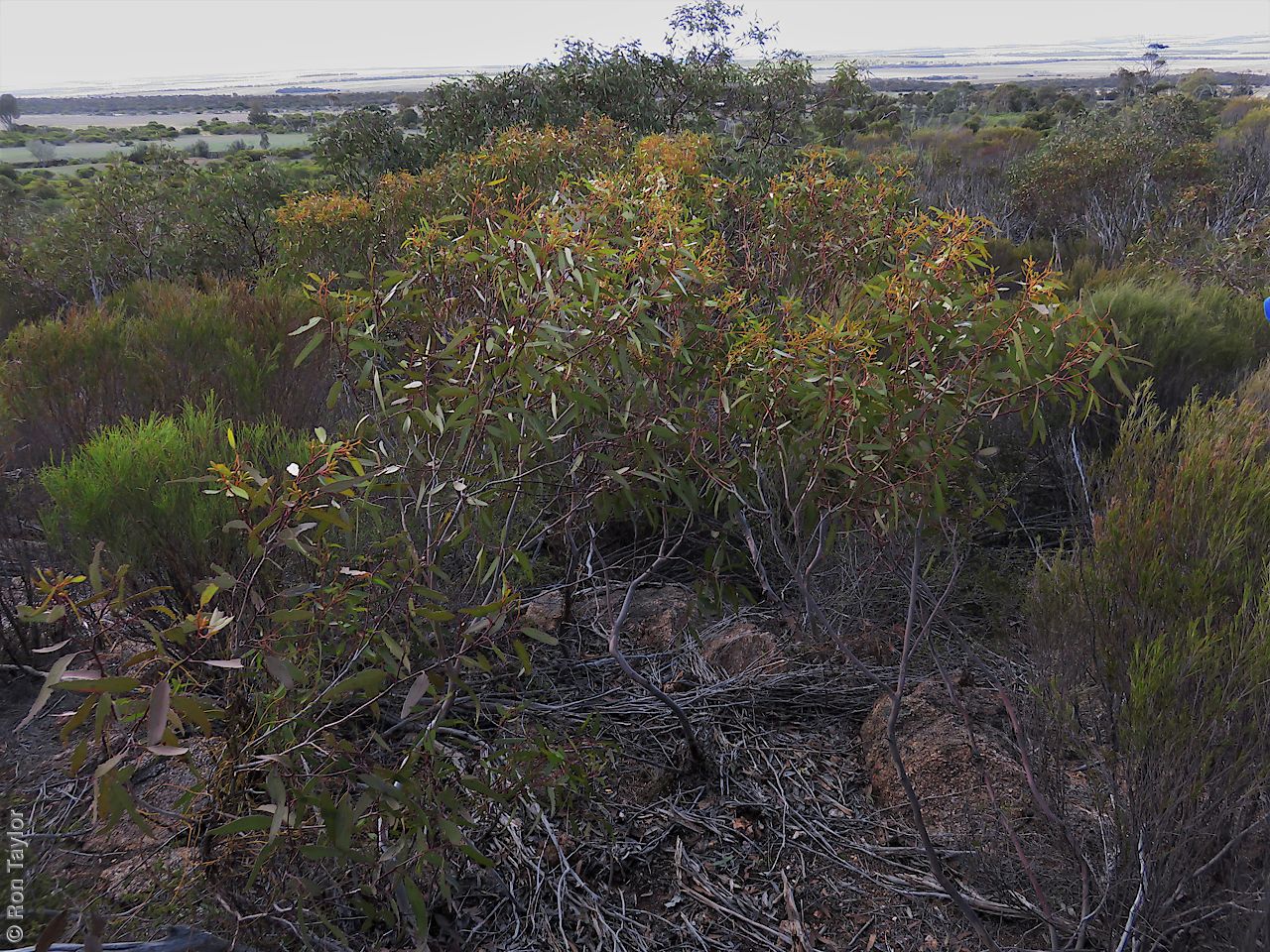
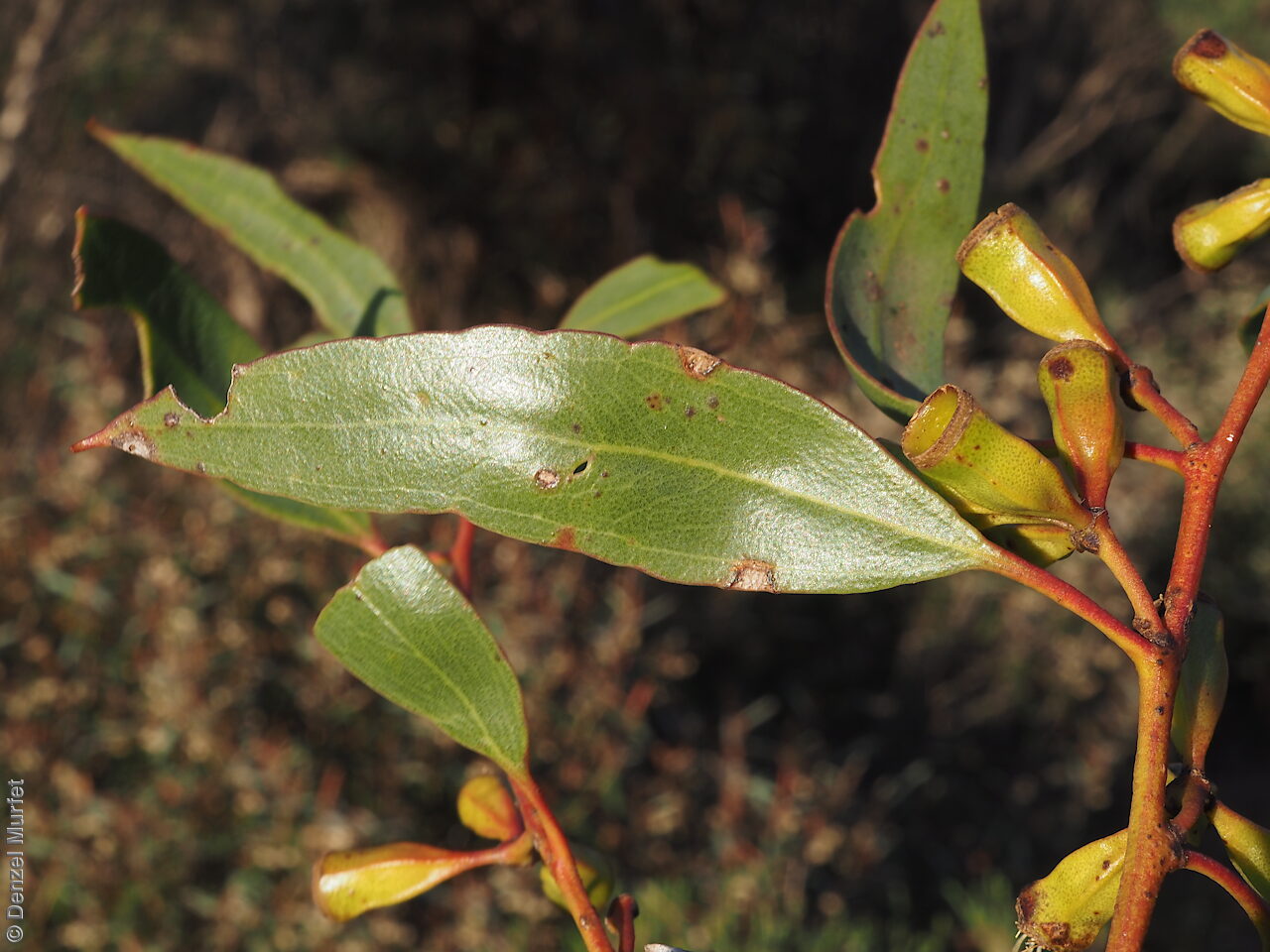
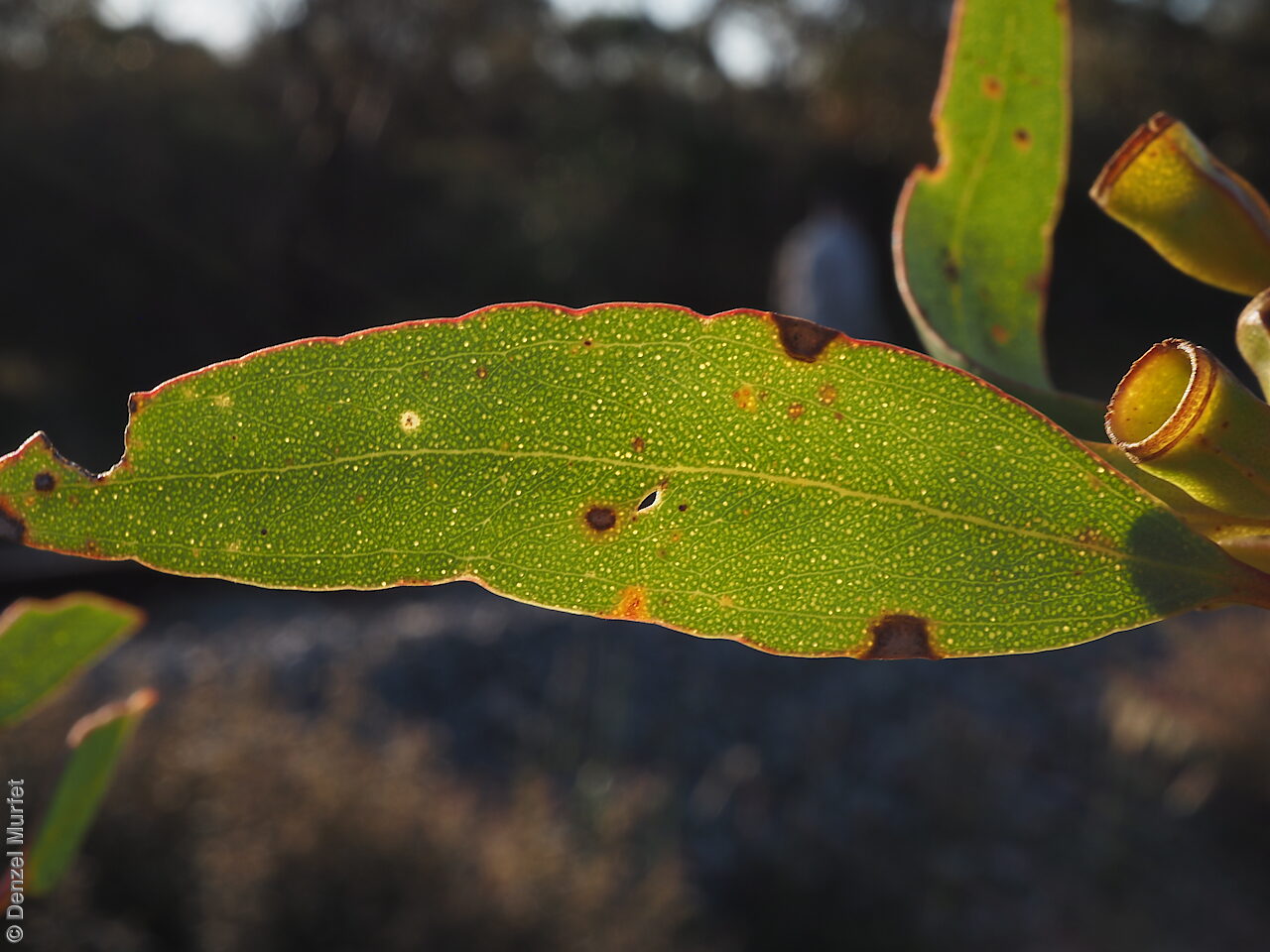
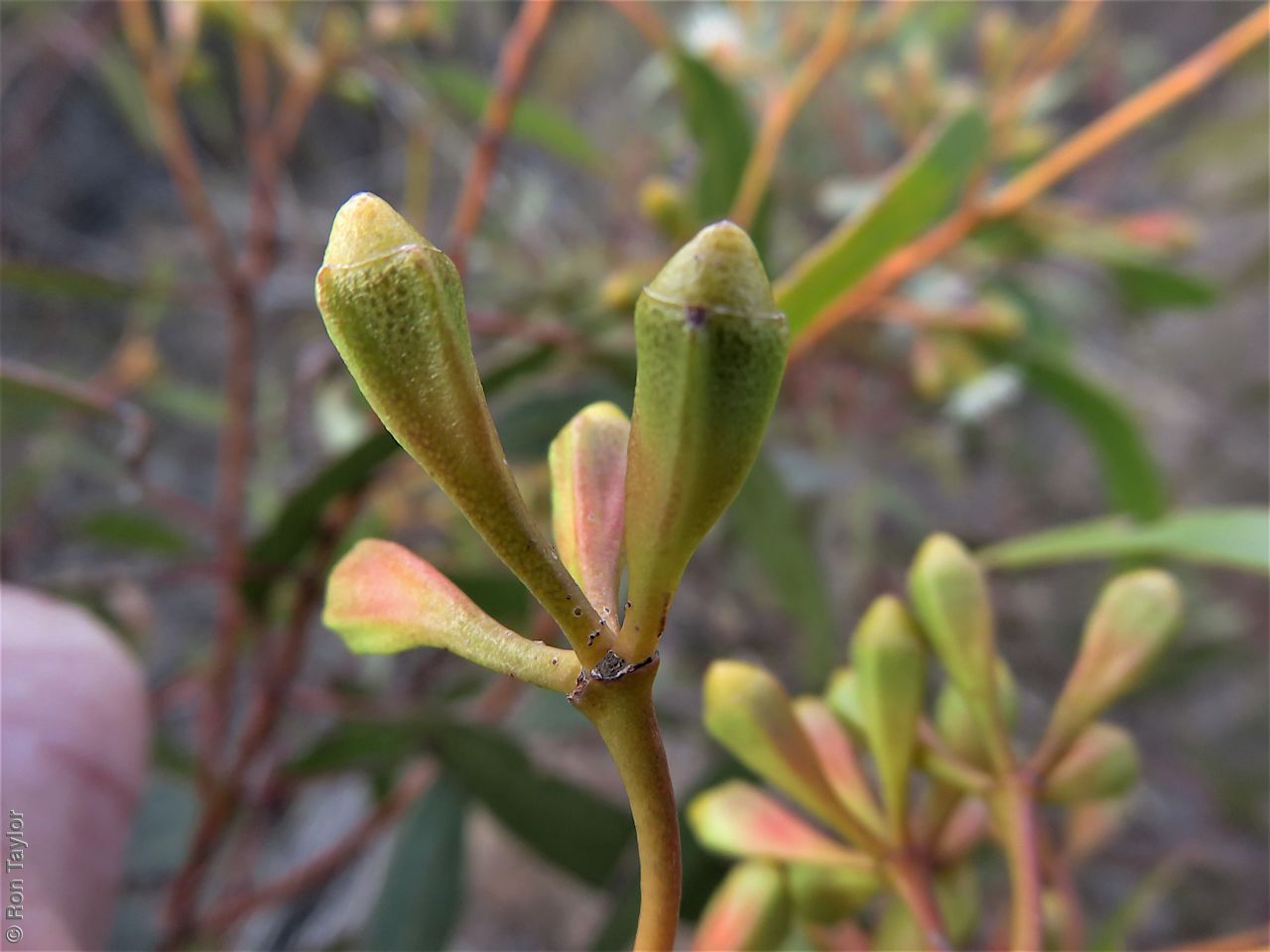
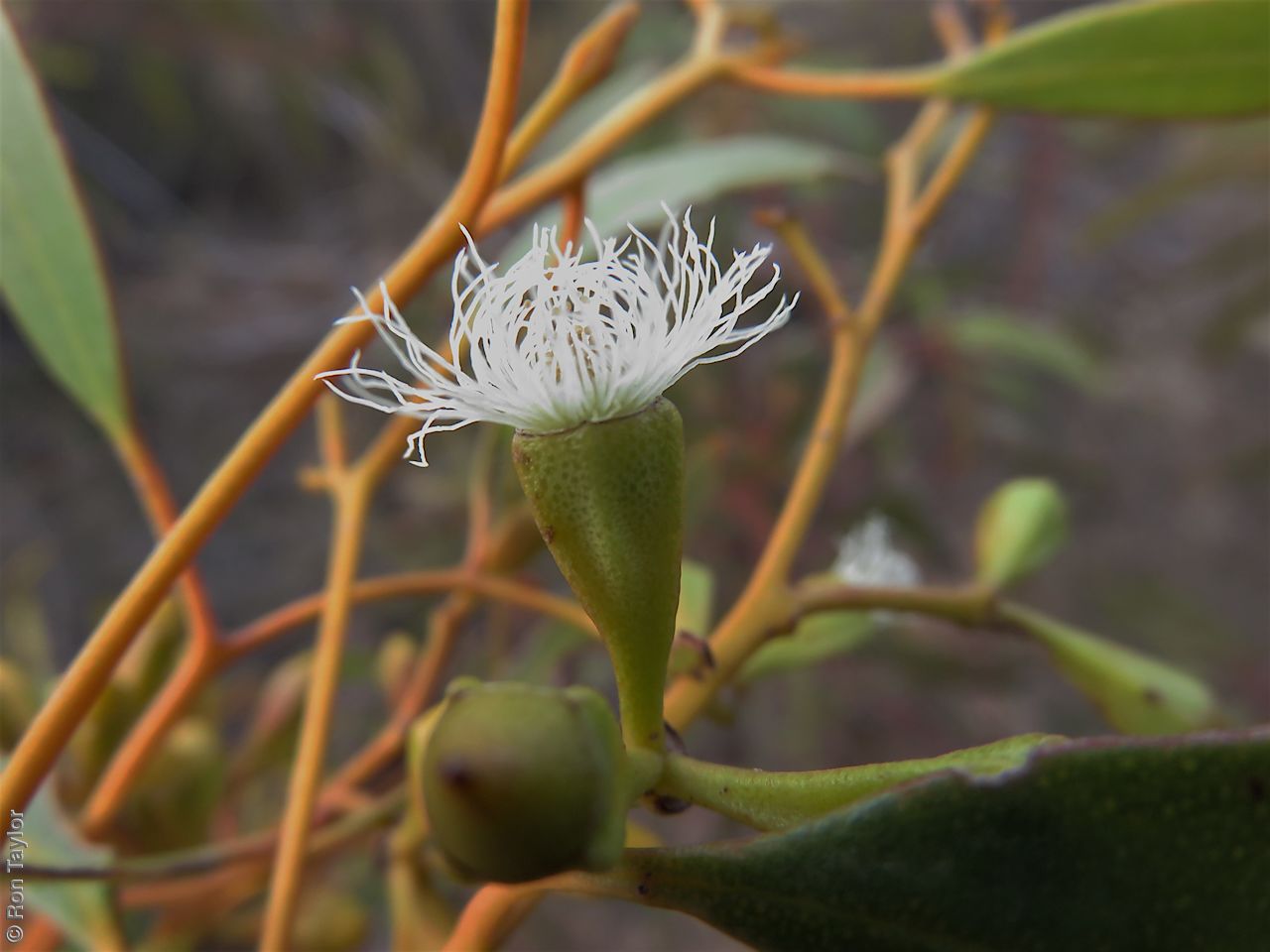

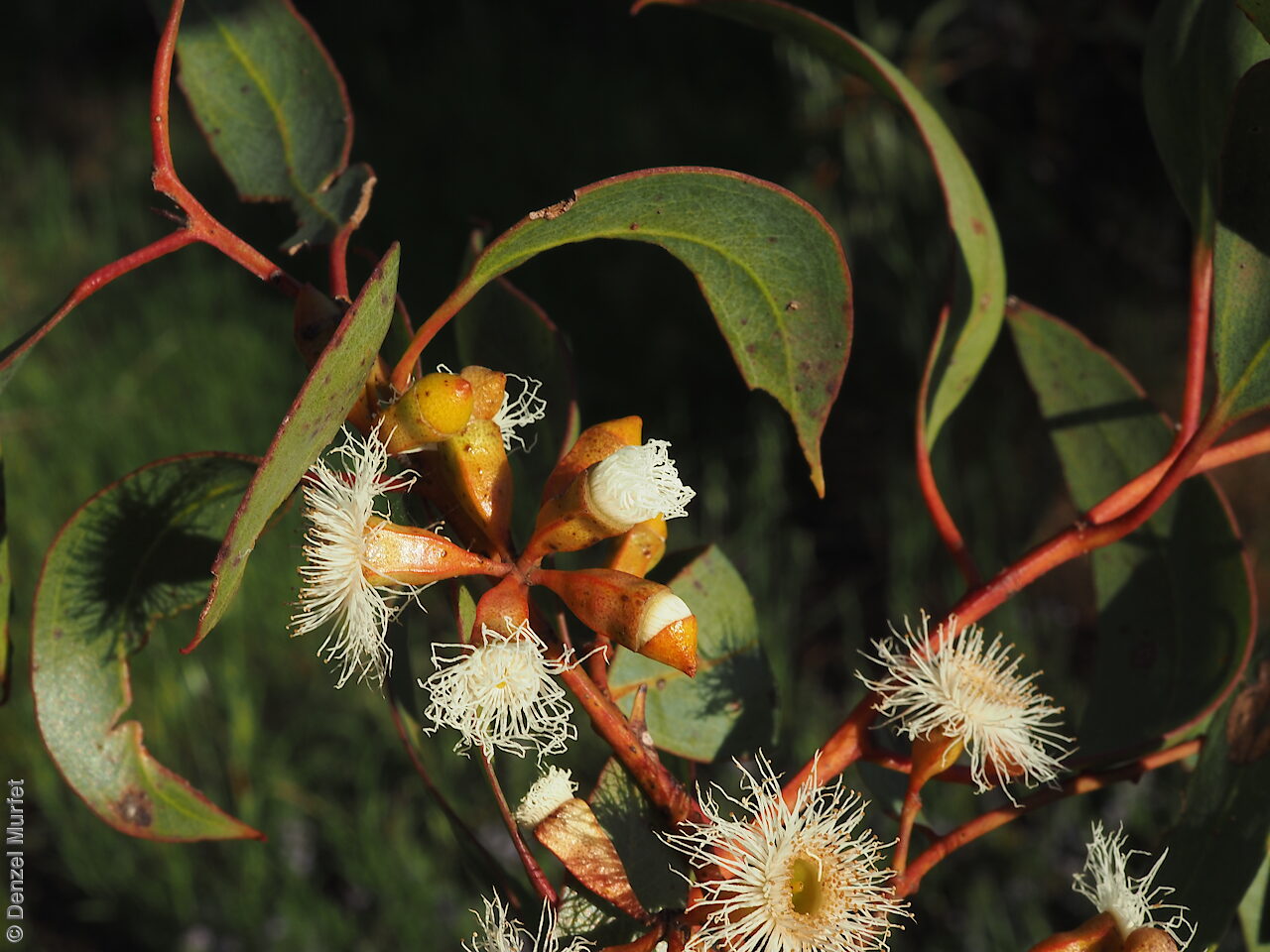
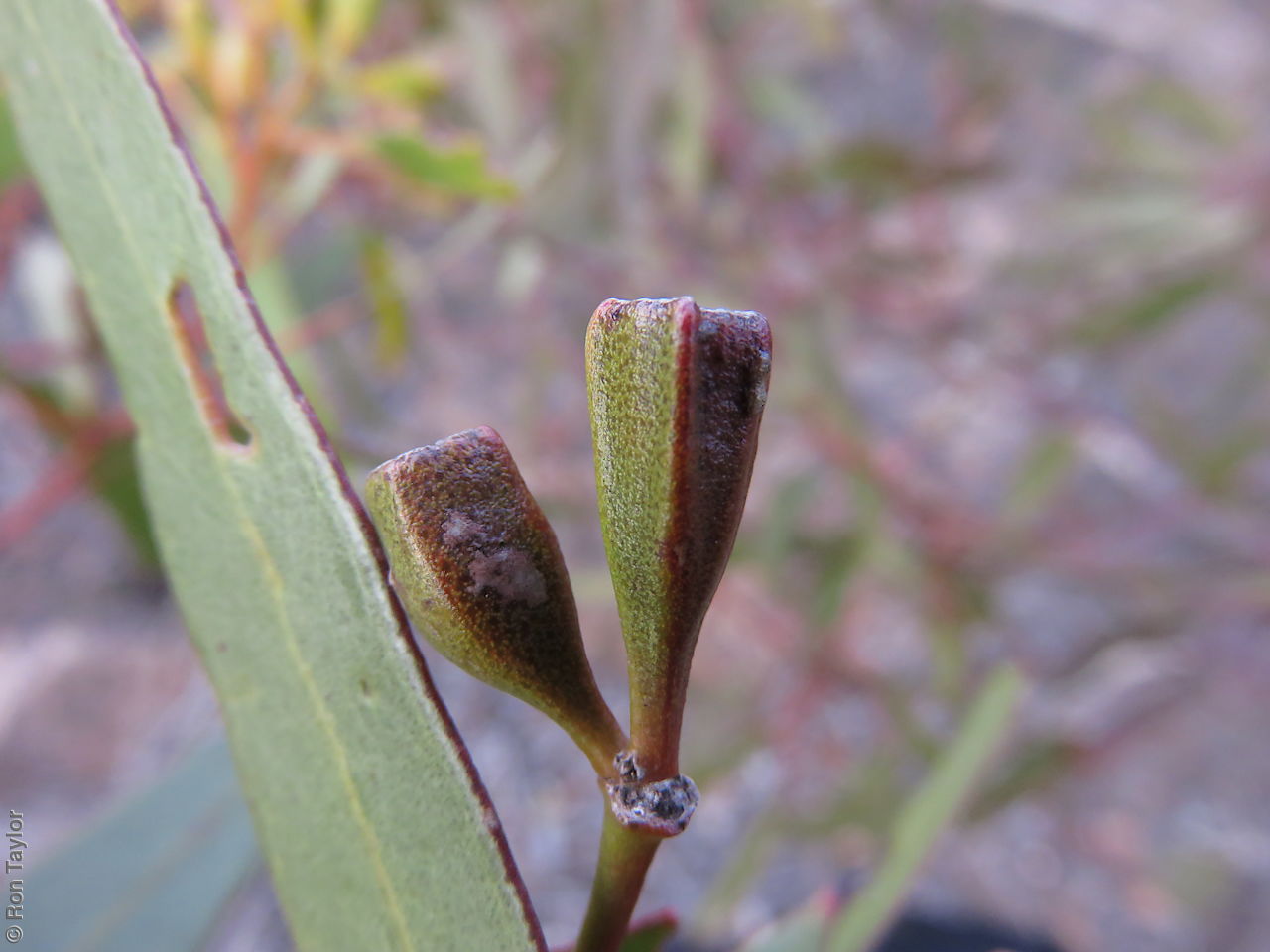
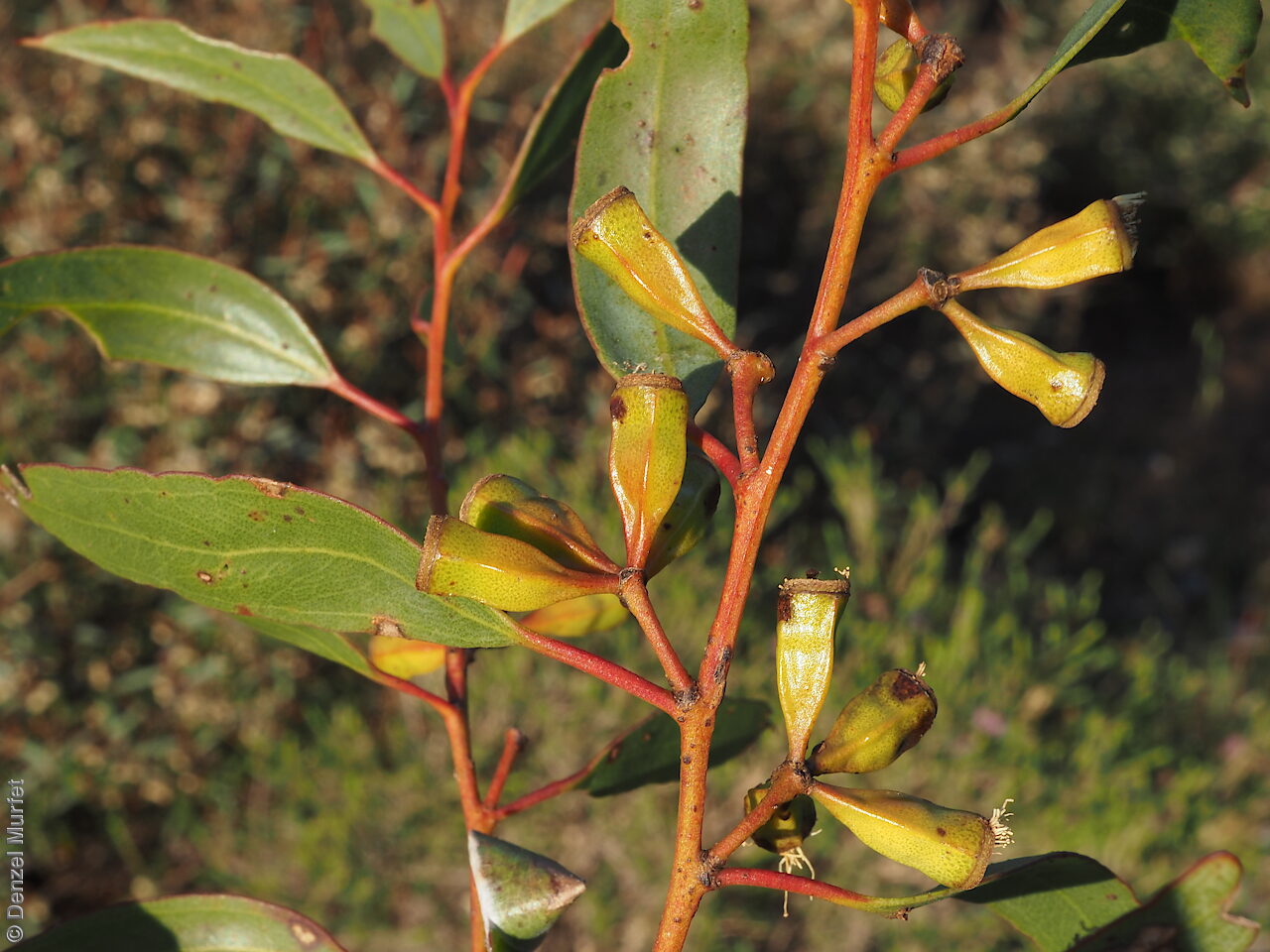
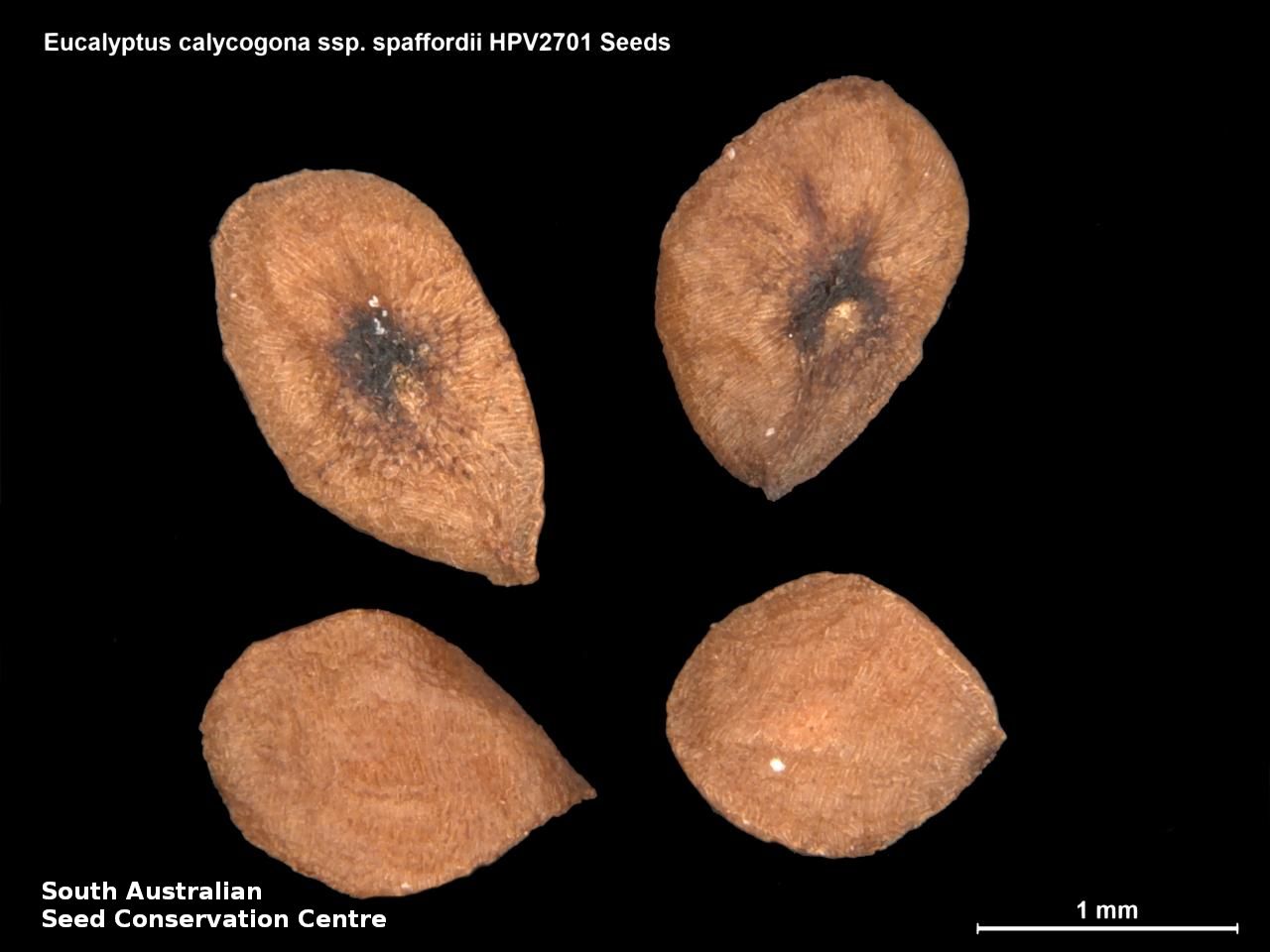

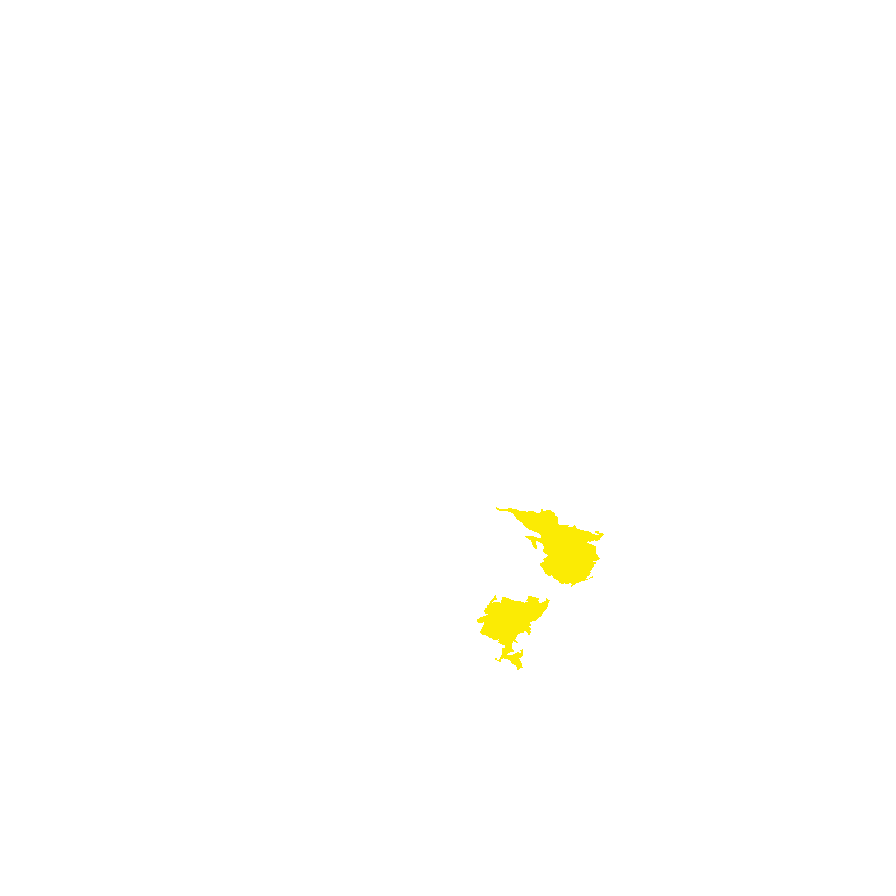
Prior names
Eucalyptus calycogona var. spaffordii, orth.var.
Eucalyptus calycogona, partly
Eucalyptus calycogona var. staffordii
Etymology
Eucalyptus from the Greek 'eu' well and 'calyptos' covered; alluding to the cap or lid which covers the stamens in the bud. Calycogona from the Greek 'calyx' the calyx and 'gonia' meaning angle; referring to the angular buds and fruits. Spaffordii named after Walter John Spafford (1884-1962), collector of the type specimen.
Distribution and status
Endemic to South Australia and found on the central lower Eyre Peninsula, growing in mallee vegetation on level and undulating growing. Native. Rare in South Australia.
Herbarium region: Eyre Peninsula
NRM region: Eyre Peninsula
AVH map: SA distribution map (external link)
Plant description
Multi-stemmed mallee to 6 m tall with smooth, grey to cream bark, sheading in strips and ribbons. Juvenile leaves elliptical to lanceolate, dull, green. Adult leaves lanceolate to 105 mm long and 24 mm wide, glossy, green. Flowers axillary in umbels 7-flowered, generally held erect. Buds with four prominent longitudinal ribs, to 15 mm long and 7 mm wide, bud cap smooth much shorter than the bud-base. Flowers white appearing in winter and spring. Fruits are woody fruit to 13 mm long and 9 mm wide, with four prominent longitudinal ribs. Seeds are brown ovoid seed to 2 mm long and 1 mm wide. Seed embryo type is folded.
Seed collection and propagation
Collect seeds between January and December. Collect mature fruits that are dark and hard (difficult to break with a finger nail), with the valves un-open any time of year. Leave the fruits in a breathable container in a dry room for one to two weeks. This allows the valves on the fruit to open and release the seeds. Separate the seeds by placing all the materials into a bucket and shaking it to dislodge the seeds. Pass the material through a sieve to separate the unwanted material. The finer material will contain both seeds (soft) and frass (hard) usually distinguishable from each other but can be very similar in shape and colour. With finer sieves, the seeds can be separated from the frass but this is not essential for storage or propagation. Store the seeds with a desiccant such as dried silica beads or dry rice, in an air tight container in a cool and dry place. From one collection, the seed viability was high, at 90%. Seeds are non-dormant, viable seed should germinate readily.
| Location | No. of seeds (weight grams) | Number of plants | Date collected | Collection number Collection location | Date stored | % Viability | Storage temperature |
|---|---|---|---|---|---|---|---|
| BGA MSB | 7,050 (2.94 g) 7,050 (2.94 g) | 40 | 8-Sep-2005 | HPV2701 Eyre Peninsula | 8-Aug-2006 | 90% | -18°C |
Number of plants: This is the number of plants from which the seeds were collected.
Collection location: The Herbarium of South Australia's region name.
% Viability: Percentage of filled healthy seeds determined by a cut test or x-ray.